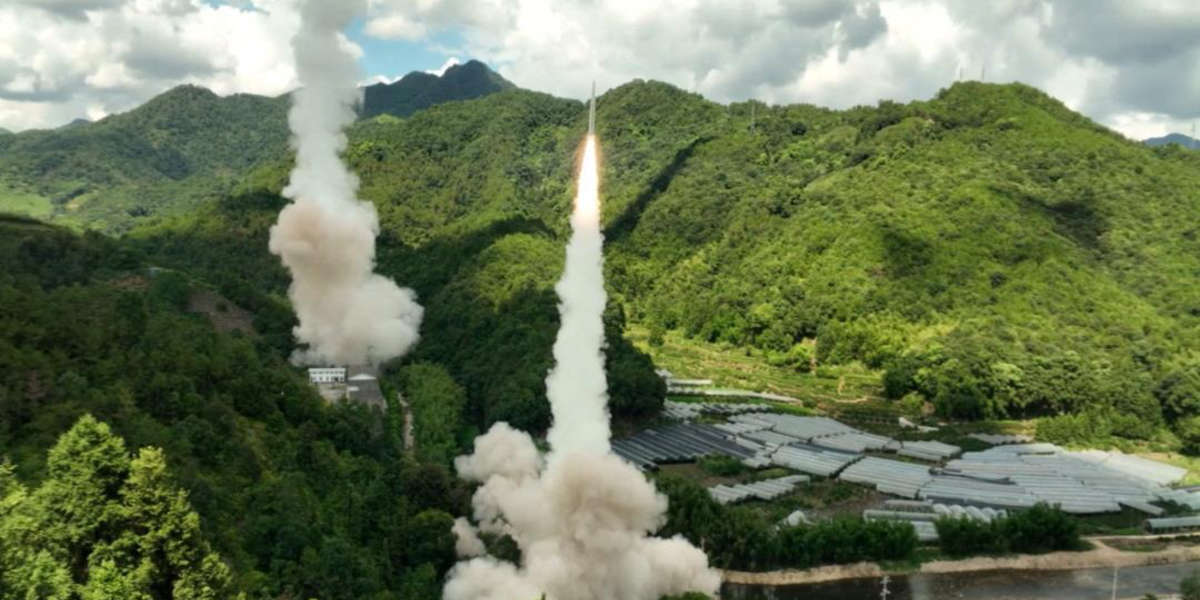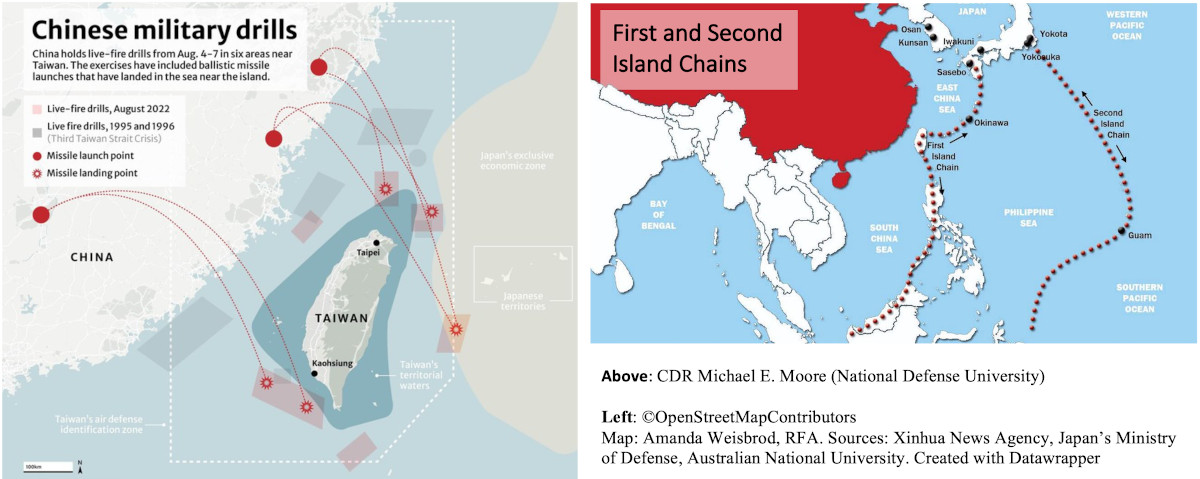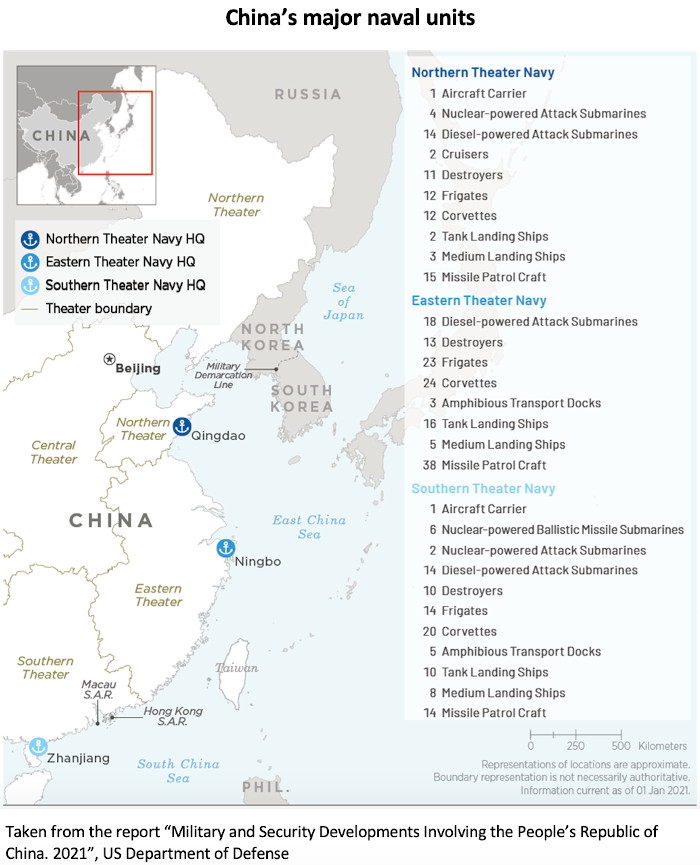In the picture
Missiles launched from an unspecified location in China, August 4, 2022 [video footage from CCTV].
In a recent article for the US Naval Institute, professor and analyst James Holmes explains why the US needs to step into the South China Sea and pursue a permanent presence of its naval forces in the region. A shift from the come-and-go policy followed during the last decades in favor of permanently deployed troops in the area, he argues, would ensure China considers it twice before launching an invasion of Taiwan. Few weeks ago, after the US Congress President, Nancy Pelosi, announced the possibility of visiting Taipei while on her South East Asia Tour, many warned such initiative could trigger serious military measures by the government of the Chinese Communist Party. The government itself went on to confirm that "those who play with fire will perish by it." And then the visit finally happened.
For many decades, the PRC has regarded Taiwan as a legitimate possession, trying to gain control over it and repeatedly using it as a pretext to extend its domain along the South China Sea. The government of Xi Jinping, who sees such environment as Chinese territorial waters, has been undertaking a serious modernization of its naval capabilities and technologies in recent years, transforming the navy of mostly coastal patrol forces into a dominant fleet. Additionally, China appears to have learned the concept of "island chains", coined by John Dulles in the 1950's. Applied against the USSR during the Cold War as part of the US containment policy, the island chains consist in imaginary lines drawn in the map by building military outposts in some of the islands of the South China Sea and the Philippine Sea; being then able to project power and restrict any unwanted access.
China has now adopted it as a key element of its maritime security strategy in the region, turning the waters between the Chinese coast and the second island chain into a region subject to grey zone operations (extending all the way to the Philippines, along the first island chain), where its coast guard ships and fishing fleet use ambiguous means to ensure China avoids a strategic encirclement by the US Navy. Chinese operations in the area are characterized by the refusal to abide by UNCLOS, while continuously harassing fishermen from the Philippines, crossing into territorial waters of countries such as Vietnam or Malaysia, and using the coast guard to block Philippine resupply ships coming in.



